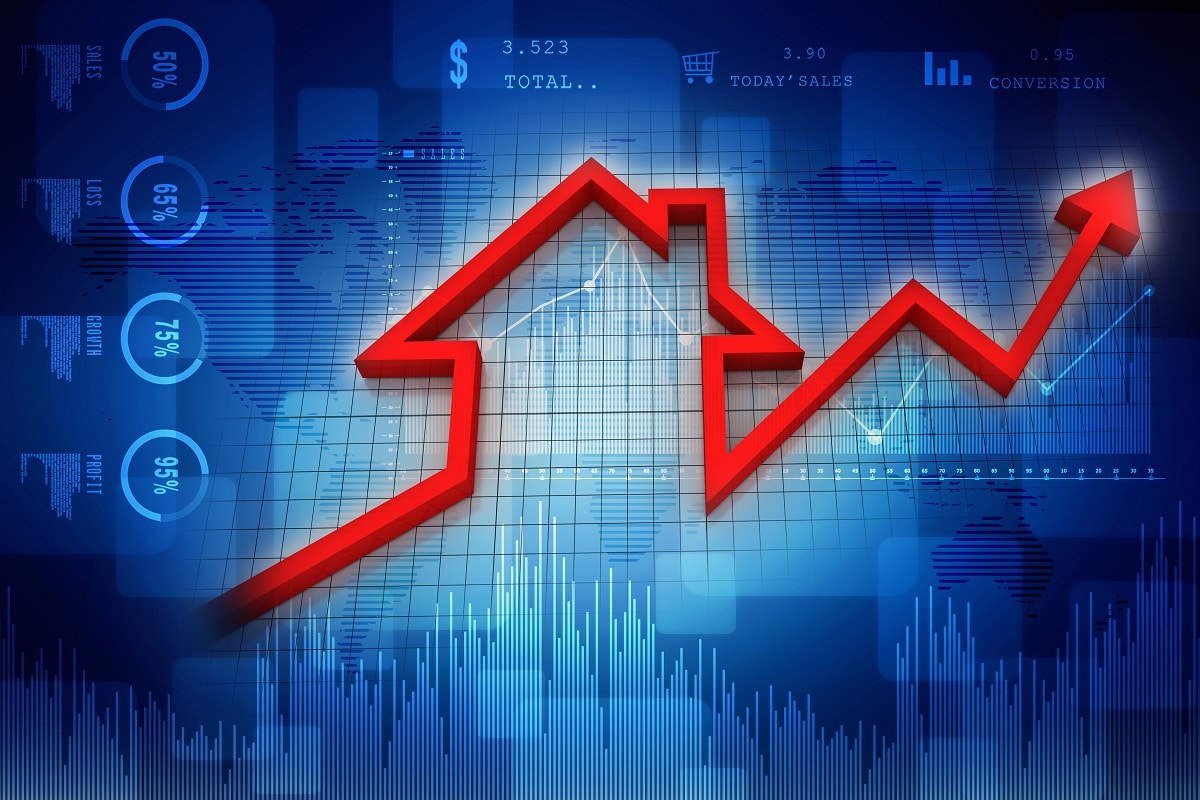This article tackling reasons to fear the pain of housing market prices was originally published by Tim Thomas. We were given permission to republish it here.
A housing bubble is when housing prices are unusually high, spurred by high demand and low supply, investor speculation, and irrational spending.
Several reasons contribute to these bubbles, including increasing economic prosperity, more mortgage product offers, low-interest rates, and easy credit availability.
The housing bubble ends when demand declines or stagnates – because of increased mortgage rates or inflation eating away at savings – and demand and supply realign (when construction catches up). It might lead to a sharp decline in housing market prices.
By themselves, these may not be signs of a housing market crash, however, the price bubble will definitely burst and at this point, you should implement steps to avoid the money pain that follows.
What could be the reasons people fear there could be a trend towards a housing market price fall? Read on to understand better.
Reasons to Fear a Fall in Housing Market Prices
The hot real estate market can be credited to the stay-at-home and work from anywhere culture of the pandemic. However, consumers are becoming increasingly concerned that real estate is experiencing a price bubble, which may lead to housing market prices falling.
Let’s understand why consumers fear that housing market prices can see a decline.
1. High Mortgage Rates
According to Freddie Mac, the average 30-year mortgage rate is around 4.67%, the highest since 2018. The anticipation that the Federal Reserve will continue to hike interest rates is the main reason for the increase.
However, the Federal Reserve’s goal to control inflation may slow housing construction.
A rate hike can increase the price of all types of loans, including those taken out by developers to construct homes.
It’s another reason that’s rising construction costs. In the short run, rising interest rates will bring down home prices. However, in the long run, they risk exacerbating a critical problem in the housing market: a lack of supply.
2. Inventory Picks Up
The cause of the present housing crisis in the United States is supply and demand and is a similar principle phenomenon that investors see in the opening range at the start of the stock market trading day.
The basic principle of supply and demand is that the less of anything consumers want, the more they are ready to pay. When it comes to housing, the more they desire it, the larger the mortgage they will take out.
As stock investors, the more confidence in a stock, the greater the demand but be cautious here and know how to hedge yourself.
When the United States began putting lockdown in place because of the pandemic in 2020, the initial assumption was that doing so would discourage individuals from buying homes.
Instead, the reverse happened. As millennial buyers took advantage of record-low borrowing rates to purchase houses, the housing market exploded.
The increase in supply could signal lower housing market prices as builders complete more new houses and the number of individuals selling their homes rises. Lesser prices will prevail once purchasers are not part of bidding wars.
3. Declining Confidence
According to a February 2022 Fannie Mae survey, 70% of consumers believe now is the wrong time to buy a home.
Only 43% of respondents believe home values will rise in the coming year, while 58% believe mortgage rates will increase. Furthermore, 17% of those surveyed are anxious about losing their jobs.
Consumers are suddenly more pessimistic about purchasing and selling conditions. Furthermore, many consumers state that their household income is presently much lower than a year ago.
Increased job insecurity can impact prospective homebuyers. Prospective home buyers are concerned about the long-term financial commitment of a mortgage loan.
4. Softening Of Home Prices
Although property prices in most markets continue to rise, there are signs of slowing in other areas.
For example, property prices in Illinois and Peoria are down 1.8%, down 5% in Mississippi and Gulfport. Texas and Beaumont have seen a 1.4% percent decline in costs, while Kansas City, Missouri, has had a 0.7 percent drop.
Despite the market’s recent weakening, price rises and bidding wars continue to rage across the United States. And, whatever cooling comes next year, the industry consensus is that it will slow, but not stop, the ongoing rise in property prices.
However, the Mortgage Bankers Association, a Washington, D.C.-based industry trade group, disagrees.
While the Association predicts a 15.3% year-on-year increase in the median price of existing homes to $362,000 in the first quarter of 2022, prices will continue to fall as the year progresses.
According to the association, the median price of existing homes will be $352,000 by 2022, and that would be a 2.5% decline in housing market prices year-on-year.
5. FOMO (Fear Of Missing Out)
There are several reasons for higher housing prices like increasing material costs, supply chain disruptions, higher disposable income during the pandemic, low-interest rates, and easy credit access.
According to the Dallas Fed, the rise has gone beyond these fundamentals and into exhilaration.
An increase in property prices generates a fear-of-missing-out surge of enthusiasm among new investors and more aggressive speculation among existing investors.
Fearful of missing out on low borrowing rates, buyers rush to purchase homes and investment properties before prices rise further. Like the stock market, the “fear of missing out” (FOMO) drives house prices new highs.
The high price-to-rent ratio indicates an imminent property bubble and likely fall in housing market prices.
6. Inflation
People have less discretionary money to spend each month because of the rapid rise in inflation, and people’s earnings and weekly income are not increasing at the same rate.
However, demand and supply influence home prices. Home prices will fall even if inflation is high due to an oversupply of homes.
Inflation tends to raise interest rates and rental expenses, and mortgage rates follow the same trend as long-term bond yields. People will not take out home loans if mortgage rates get too high. Demand will decrease, and home prices will fall.
7. Riskier Mortgages
When we see lower credit standards and riskier mortgages increasing in the market, it’s another warning that housing market prices are likely to fall.
If lenders relax underwriting standards, higher-risk mortgages can create a housing catastrophe. Lending restrictions can be given in bulk to home buyers who cannot afford homes or for home sales when the houses have higher prices than their market value.
If lenders begin to relax their requirements to accommodate excessive higher-risk borrowers, it can lead to a housing bubble (artificially inflated property values) – a bubble in housing market prices will often result in a fall in prices.
As prices detach from the fundamentals, the real estate market in the United States may start showing signs of a housing bubble.
Final Word on Housing Market Prices
When there is a widespread perception that prices will continue to rise, house market prices might deviate from fundamentals such as supply and demand.
Exuberant, expectations-driven increases in property prices could result in bankruptcies, broad implications on growth and employment, and altered investment patterns.
More Articles From Wealthy Living
- Best 5G Stocks That Should be on Your Watchlist
- Warning Signs a Big Housing Market Crash is Just Around the Corner
- Dividend Kings Stocks That You Should Add to Your Watchlist Right Now
- Discover What is Soulja Boy’s Net Worth and the Secret to His Success
Disclosure: The author is not a licensed or registered investment adviser or broker/dealer. They are not providing you with individual investment advice. Please consult with a licensed investment professional before you invest your money.
Learn how to diversify and hedge your long-only stock portfolio. We’ve partnered with Tim Thomas to give you the opportunity to sign up for a free insight into the Swing Trading 101 program. The program has been developed over thousands of hours of trading over hundreds of thousands of dollars across stock, commodities, options, and cryptocurrencies. It’s designed to empower you to take a unique but strategic approach to the markets. Learn more about swing trading.
Tim Thomas has investments in real estate.
This post was produced by Tim Thomas / Timothy Thomas Limited and syndicated by Wealthy Living.
Featured image credit: Shutterstock.





